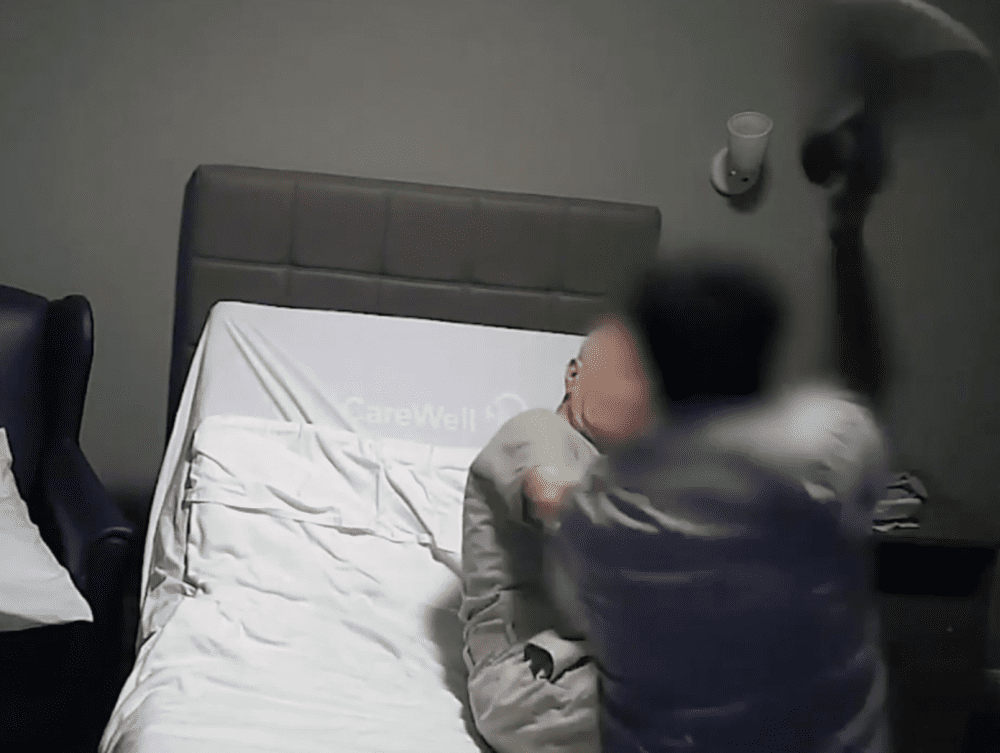
Sydney nursing home worker Prakash Paudyal who was caught on a hidden camera assaulting an 82-year old dementia patient was jailed for a minimum of 4 months yesterday.
The assaults that were caught on hidden camera occurred between August 26 and September 3 at the Bupa Seaforth facility and depicted the 36-year-old nursing home worker roughly pulling an 82-year-old man with dementia by his shirt and assaulting him with a shoe.
It was also revealed in court late last year that in another incident, the victim David Nabulsi, fell to the floor from his bed due to the actions of Mr. Paudyal, who then proceeded to strip the victim’s bed while the 82-year-old remained lying on the ground.
The facts, in this case, stated that the victims’ daughter had placed a hidden camera disguised as a photo frame in her father’s room after becoming suspicious and concerned about the way he was being treated.
The 82-year-old victim had previously lost his ability to speak and understand English which made it hard for him to communicate with staff.
Prakash Paudyal was fired from his job at the aged care facility and has been banned from working in the aged care industry as a condition of his bail.
4 Months??
People who care for the vulnerable undertake a massive responsibility that requires complete and utter trust.
A large portion of aged care residents rely on staff to ensure their wellbeing, so any violation of this should be viewed far more harshly than other common crimes.
While seeing someone actually receive jail time for common assault in Australia is quite rare, the idea that someone who has been convicted and caught on camera attacking a vulnerable 82-year-old should receive a minimum of 4 months behind bars is farcical.
It’s hard to imagine that we would be seeing a minimum 4-month jail term if the hidden camera footage showed a grown man assaulting an infant, and this is a stark example of the lack of importance given to issues that affect elderly people in Australia.
Sentencing for crimes with elderly victims should incur far greater penalties, similar to the punishments given to those who have committed crimes against children.
Both age groups rely on society to ensure their quality of life, and both age groups deserve to have their welfare seen as sacred.
Is CCTV Part of the Solution to Aged Care Problems?
The thought of installing CCTV in the rooms of the elderly raises a number of different questions.
On the one hand, the elderly are adults. So in theory, decisions regarding their own safety and privacy should ultimately be left up to them.
And this definitely rings true for people who still have the ability to make uncompromised decisions.
But there are a large number of residents within aged care facilities that are living with a mental disability or are simply unable to communicate their thoughts.
And these are the types of people that are most likely to be taken advantage of.
The inability to gain true consent from some elderly people makes the topic of CCTV a murky subject matter, despite the obvious benefits that it may have.
In cases like this one involving Mr. Paudyal, there may have been no definitive evidence that any wrongdoing had occurred if the victims’ daughter did not make the choice to place a hidden camera in her father’s room.
Mr.Nabulsi’s inability to communicate with staff meant that the only evidence of mistreatment prior to the assaults was the appearance of bruises and changes of his behavior, and these are nuanced signs that can easily be missed.
And even though hidden CCTV managed to capture the employee committing these assaults, there is a school of thought that suggests that the known presence of CCTV cameras and the fear of being captured on film may have the ability to prevent incidents like these in the first place.
The topic of CCTV cameras in aged care falls in line with the recent public outcries for further transparency within the aged care sector as a whole.
Publishing staff ratios is currently a hot topic within the industry that has a large portion of the general public calling for the amount of rostered employees and their job titles to be made accessible to the public.
There is currently a stigma that aged care facilities try to shield the public from their inner workings, which is unfortunate because this stigma often affects the majority of hardworking and selfless aged care employees who do their best to ensure the safety of wellbeing of our elderly.
It’s important to remember that horrible incident’s like this are rare in aged care facilities and they are far removed from the vast majority of caring aged care employees who walk the halls within facilities.
And if staff ratios and CCTV became part of the landscape within the aged care sector, one thing that these things would clearly show is just how hard the nurses and carers of this country are working, and why they deserve our utmost respect.
But with safety being the primary focus within aged care facilities, I think that most families would welcome the opportunity and peace of mind that would come from having the extra layer of scrutiny that a camera could provide. Even if it comes at their own expense.